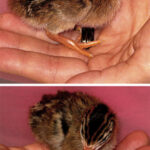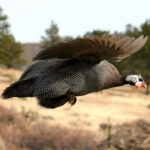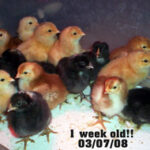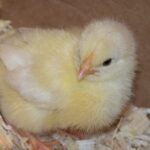Homemade egg turners are an economical way to raise fowl hatch-lings. Many people use egg turners to raise exotic birds, by placing the egg turners inside an incubator or homemade incubator made to accommodate a rotating egg turner. Egg turners can be used for all types of eggs within an incubator; including quail, fowl, pheasant and chicken. The egg turners need to rotate within an incubator to prevent the yolk from sticking to the sides of the egg, which ensures proper development of the hatch-lings.
Acquire the appropriate items for making a homemade egg turner. Start off small with simple items, such as an electric motor, incubator, plastic rails and wracks, an old refrigerator with a see through glass door, pivot tray, and a Styrofoam cooler for small homemade incubators.
Use the egg rails and attach them to the wracks, for use inside a bigger appliance incubator or choose smaller, flat wracks with an egg turning device for use in a Styrofoam cooler. Order on-line from a supply store that sells home-made assembled egg turners, or use a pivot tray that can hold recycled egg cartons.
Take the egg rails, and assemble them to the wracks. Purchase plastic egg rails and plastic egg wracks that are made to work in order together, within the incubator of your choice. Take recycled egg cartons, the cardboard or Styrofoam kind, in place of egg rails, and use a pivot tray. Attach the pivot tray within the incubator, with either screws, or in the case of Styrofoam, drill a small hole in the sides for the ends of the pivot tray to fit in, and place the egg cartons on the pivot tray. Make sure the egg cartons fit together snugly on the pivot tray, or trays, depending on the size of the incubator and the amount of eggs used.You
Test the wracks, rails or pivot egg turner before putting actual eggs onto it, to ensure that they are in working order. Make sure the motor is connected to the egg turner wracks, rails or pivot egg turner, and that the egg turner does not flip over, but rather rotates with the eggs safely upright on the egg turner, once inside the incubator.
Make sure there is enough room underneath for the turner to move. Line up the wracks, rails or pivot egg turner so that they are in perfect alignment within the grooves of the homemade incubator.
Place the eggs on the egg holders once the turner is in place, with the small end of the egg down. Place hatching thermometer on top of the eggs near a viewing window, or wherever the temperature can be easily viewed without disturbing the eggs, to get an accurate reading. Never move the egg turner manually while running and incubating eggs, for this might damage the motor and egg turner in general.
Things You’ll Need
Electric motor
Incubator
Plastic rails and wracks
Old refrigerator
Pivot tray
Styrofoam cooler
Recycled egg cartons
Screws
Drill
Hatch-ling thermometer
Tip:
Study how to raise hatch-lings before using a homemade egg turner. Learn about the correct temperatures for various fowl, moisture channels needed within the incubator and other essentials, aside from the egg turner.







